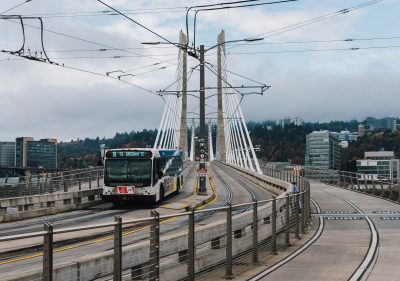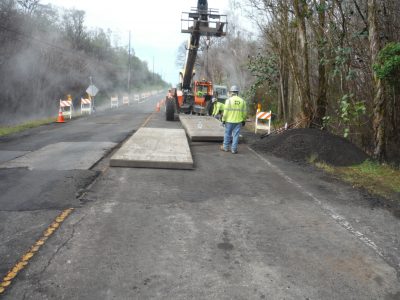And sometimes, there’s good news.
While many projects across the country are at a standstill due to budgetary constraints, while others have been able to move forward with less traffic on the road – all as a result of the COVID-19 pandemic, it’s important to also recognize the innovative and exciting engineering projects and programs that are paving the way for the future of infrastructure modernization.
ASCE has unveiled 12 new additions to its list of Infrastructure Gamechangers, groundbreaking infrastructure projects and programs that represent the latest innovations in transportation, water and energy infrastructure that are transforming the way engineers plan, build and adapt to the nation’s infrastructure needs.
A project can be designated a Gamechanger for a variety of reasons, including innovative technologies; unique funding mechanisms; breakthroughs in construction efficiency through re-imagined design and planning methods or unique collaboration between agencies or private firms; and/or a combination of factors that prioritize the enhancement of the local community. Following this latest update, 41 states are represented by an Infrastructure Gamechanger.
The 12 projects or programs highlighted in the 2020 update to ASCE’s Infrastructure Gamechangers represent several infrastructure categories, including:
- Bridges: the Tilikum Crossing pedestrian and transit bridge in Portland, Oregon is the longest car-free bridge in the nation, spanning 1,700 feet. The structure sets a national

The Tilikum Crossing pedestrian bridge. Courtesy of Trimet.
standard for multi-model infrastructure.
- Drinking Water: Branson, Colorado used creative crowdsourcing methods to raise the money necessary to upgrade its water filtration unit, which also runs on wind and solar power. The Sustainable Water Initiative for Tomorrow (SWIFT) in Eastern Virginia is an innovative water treatment project changing the way water is recycled by further treating wastewater until it meets drinking water standards. The Illinois Fiber Connect Project by EJ Water Cooperative is a first-of-its kind initiative that runs fiber alongside water pipelines in the same trench, reducing costs for rural communities and allowing for smart meters to provide live data.
- Levees: a Mississippi State University study using Uninhabited Aerial Vehicle Synthetic Aperture Radar (UAVSAR) – created by NASA – was able to use the technology to penetrate layers of soil to analyze areas that will suffer from slump slide.
- Roads: the Hawaii Department of Transportation (HDOT) used heat-resistant panels to protect Highway 130 after the Kilauea Volcano erupted in 2018, keeping road temperatures at

Heat-resistant panels to protect Highway 130. Courtesy of HDOT.
around 130 degrees, down from 175 to 275 degrees without the panels. The Wyoming Department of Transportation (WYDOT) Connected Vehicle Pilot Program, in conjunction with the USDOT, installs connected vehicle technology into semi-trailers to communicate dangerous road conditions to other drivers.
- Schools: the STAR School in Flagstaff, Arizona, is the first public elementary school I America to be completely dependent on solar power, with additional help from wind generators.
- Transit: the Pennsylvania Department of Transportation’s (PennDOT) demand-response transit service brought together demand-response providers to deliver an efficient system, reducing maintenance costs and providing better service to residents in need. Portland, Oregon’s scooter tax pilot recognized the role scooters can play in the transit ecosystem and began a 25-cent tax per ride to provide additional resources for the local transit authority.
- Wastewater: the Southwestern Parkway Combined Sewer Overflow (CSO) Basin project tin Louisville, Kentucky, fixed the city’s CSO problem with “capture and release” technology to store CSOs during storms before gradually releasing them into treatment facilities as capacity became available. The Yahara Watershed Improvement Network (Yahara WINS) is a groundbreaking initiative to clean up excess phosphorous pollution in the local watershed in Madison, Wisconsin.
These projects are setting standards for future design, planning and construction methods, along with financing measures, for major construction projects. By improving connectivity and data sharing, increasing public safety, and reducing costs for taxpayers, the civil engineers behind projects such as these Infrastructure Gamechangers are driving progress within the built environment which we can benefit from for decades to come.
Check out the full list of ASCE’s Infrastructure Gamechangers.


